
GEOLOGICAL QUARTERLY
Scope & Guideline
Fostering Scientific Collaboration in Geology.
Introduction
Aims and Scopes
- Paleoenvironmental Studies:
Research focusing on reconstructing past environments through geological and paleontological evidence, including sedimentology and biostratigraphy. - Geochemical and Mineralogical Analyses:
Studies aimed at understanding the composition, formation, and alteration of minerals, often utilizing advanced techniques such as isotopic analysis and geochemical modeling. - Stratigraphic Investigations:
Research dedicated to the analysis of stratigraphic sequences to elucidate geological history and basin development, often involving detailed sedimentological and paleontological assessments. - Tectonics and Structural Geology:
Explorations of tectonic processes and the structural evolution of geological formations, often integrating geophysical techniques and field studies. - Environmental Geology:
Studies assessing the interactions between geological processes and environmental factors, including contamination assessments and resource management. - Geological Hazards and Risk Assessment:
Research focused on understanding and mitigating the impacts of geological hazards, such as landslides, earthquakes, and subsidence.
Trending and Emerging
- Application of Artificial Intelligence in Geology:
The utilization of AI and machine learning techniques for predictive modeling and data analysis is on the rise, reflecting a broader trend towards integrating technology in geological research. - Climate Change Impacts on Geological Processes:
There is an increasing focus on understanding how climate change influences geological processes, sedimentation patterns, and the stability of geological formations. - Sustainable Resource Management and Environmental Remediation:
Research that intersects geology with environmental science, particularly in the context of sustainable mining practices and remediation of contaminated sites, is gaining prominence. - Geophysical Methods in Geological Studies:
The use of advanced geophysical techniques, such as electrical resistivity tomography and ground-penetrating radar, is emerging as a significant trend for subsurface investigations. - Paleobiology and Evolutionary Geology:
A growing interest in the evolutionary aspects of geology, including the study of fossil records and their implications for understanding past environmental conditions.
Declining or Waning
- Traditional Mineral Exploration:
Research focused solely on mineral exploration without integrating modern techniques or environmental considerations is becoming less prominent as the field advances towards more holistic approaches. - Static Geological Modelling:
Publications centered on purely static models of geological formations are decreasing, as the field shifts towards dynamic modeling that incorporates temporal changes and real-time data. - Regional Geological Surveys without Interdisciplinary Links:
Studies that limit themselves to regional surveys without interdisciplinary approaches, such as integrating geophysics or environmental science, are witnessing a reduction in interest.
Similar Journals
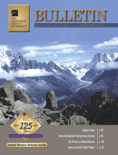
GEOLOGICAL SOCIETY OF AMERICA BULLETIN
Bridging the Past and Future of GeoscienceThe Geological Society of America Bulletin (GSA Bulletin), with ISSN 0016-7606 and E-ISSN 1943-2674, is a premier scholarly journal published by Geological Society of America, Inc. Based in the United States, this journal has been a cornerstone of geological research since its inception in 1890, making significant contributions to the understanding of Earth sciences over more than a century. Recognized for its rigorous peer-review process, the GSA Bulletin currently holds a prestigious Q1 ranking in Geology, positioning it among the top 14 journals in Earth and Planetary Sciences in terms of Scopus ranking, reflecting the high quality and impact of the research it publishes. Researchers, professionals, and students alike benefit from its comprehensive coverage of geological topics, including sedimentology, volcanology, and paleontology, which supports the advancement of knowledge in the geosciences. While the journal is not open access, it continues to provide a vital platform for innovative research and critical discussions that shape the future of geology.
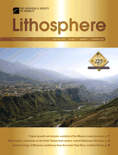
Lithosphere
Advancing Geoscience Knowledge for a Sustainable Future.Lithosphere, published by GEOSCIENCEWORLD, is a premier open access journal that has been at the forefront of geological research since its inception. With the ISSN 1941-8264 and the E-ISSN 1947-4253, this journal serves as a vital resource for researchers, professionals, and students interested in Earth and planetary sciences, particularly in the field of geology. Its impressive ranking of Q2 in the 2023 category indicates its vital role in disseminating high-quality, impactful research. The journal’s commitment to open access since 2018 enhances its reach, providing global accessibility to cutting-edge studies that span a diverse range of geoscientific topics, from tectonics to sedimentology. With Scopus Rank #88 out of 321 in Earth and Planetary Sciences, it offers a strong platform for scholars to share their findings and engage with the latest advancements in the discipline. As the journal continues its convergence from 2009 to 2024, Lithosphere remains a crucial publication for those striving to deepen their understanding of Earth's systems.
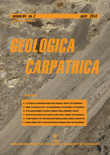
GEOLOGICA CARPATHICA
Pioneering Research in Earth and Planetary SciencesGEOLOGICA CARPATHICA, with ISSN 1335-0552 and E-ISSN 1336-8052, is a distinguished open access journal published by the Slovak Academy of Sciences Geological Institute, serving as a pivotal platform for the dissemination of research in the field of Geology. Established in 1991 and continuing through 2024, the journal is recognized for its significant contributions to Earth and Planetary Sciences, evidenced by its 2023 Scopus ranking placing it in the second quartile (Q2) within Geology. With an H-index that showcases its impactful publications, GEOLOGICA CARPATHICA is committed to fostering scholarly communication while promoting accessible research, having adopted an open access model since 2009. Located in beautiful Bratislava, Slovakia, this journal aims to engage a global audience of researchers, professionals, and students interested in ecological, geological, and environmental studies, making it a prominent resource for enriching the scientific community's understanding of the Carpathian region and beyond.

Geological Field Trips and Maps
Charting New Territories in Geological ScienceGeological Field Trips and Maps is a pivotal journal published by IST SUPERIORE PROTEZIONE & RICERCA AMBIENTALE-ISPRA in Italy, dedicated to advancing the field of geological sciences through practical applications and systematic exploration. The journal, which operates under the ISSN 2611-6189, focuses on providing valuable insights through geological maps and field trip reports, enriching both academic research and practical understanding of geology. Despite not having an Open Access option, it presents an opportunity for researchers and professionals to engage with peer-reviewed content that navigates through essential topics such as economic geology, stratigraphy, and planetary change, where it holds respectable quartile rankings, including Q3 in Economic Geology and Q4 in Global and Planetary Change as of 2023. Between 2018 and 2024, this journal aims to foster collaboration and knowledge-sharing among geologists, making it an invaluable resource for anyone vested in the exploration of Earth's complex systems.

China Geology
Innovating Geoscience Research, One Article at a TimeChina Geology, published by KEAI PUBLISHING LTD, is a leading open-access journal that serves as a pivotal platform for disseminating high-quality research across a wide spectrum of Earth sciences. Since its inception in 2018, the journal has rapidly established itself with an impressive Q1 ranking in multiple critical categories, including Geology, Economic Geology, and Oceanography, among others, reflecting its significant contribution to the academic community. Positioned as a top-tier journal in the Earth Planetary Sciences domain, it ranks #22 out of 321 in Geology and exhibits an admirable impact in sub-fields such as Earth-Surface Processes and Geochemistry and Petrology. China Geology is committed to promoting rigorous scientific inquiry and facilitating the open exchange of knowledge in the geosciences, making it an essential resource for researchers, professionals, and students eager to explore innovative developments and fundamental advances in geology. The journal’s accessibility ensures that critical findings reach a broad audience, thereby enhancing collaboration and driving forward scientific discourse in the global community.
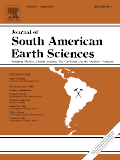
JOURNAL OF SOUTH AMERICAN EARTH SCIENCES
Unveiling Earth's Secrets Through South American LensesJOURNAL OF SOUTH AMERICAN EARTH SCIENCES is a premier interdisciplinary journal dedicated to publishing high-quality research in the fields of Earth-Surface Processes, Geology, and Paleontology, making it an essential resource for scientists and researchers focused on South American geology and its diverse geological phenomena. Published by Pergamon-Elsevier Science Ltd in the United Kingdom, this journal has been instrumental in disseminating groundbreaking studies since 1988, showcasing contributions that push the boundaries of knowledge in Earth and Planetary Sciences. With an impressive Scopus ranking—positioning it in the 74th percentile for Paleontology and 71st for Geology—this journal not only reflects robust academic quality but also its commitment to addressing critical geological challenges in South America. Researchers will appreciate its objective of advancing understanding of geological processes while providing insights into past, present, and future Earth environments. Although available through traditional subscription models, the journal's vast repository of articles enriches the academic landscape, facilitating the sharing of vital research among professionals, students, and geological practitioners.

Journal of the Geological Society of Korea
Advancing the Frontiers of Earth SciencesJournal of the Geological Society of Korea, published by the Geological Society of Korea, is a pivotal platform for researchers and professionals in the field of geology and earth sciences. With an ISSN of 0435-4036 and an E-ISSN of 2288-7377, this journal fosters the dissemination of scholarly articles that encompass a wide range of topics within earth and planetary sciences. Despite being categorized as Q3 in both Earth and Planetary Sciences (miscellaneous) and Geology, the journal has made significant strides in contributing to academic discourse, with a Scopus rank indicating robust participation in its academic field. Located in Seoul, South Korea, the journal aims to provide a comprehensive resource for the geological community, inviting submissions from both Korean and international researchers alike. With the convergence of years from 2019 to 2024, the Journal of the Geological Society of Korea stands as a vital resource for advancing our understanding of geological phenomena and fostering collaboration within the global geosciences community.

Journal of Geosciences
Navigating the Frontiers of Earth's ScienceJournal of Geosciences is a distinguished peer-reviewed journal published by CESKA GEOLOGICKA SPOLECNOST, based in the Czech Republic, that serves as a vital platform for the dissemination of innovative research in the field of Earth and Planetary Sciences. With an ISSN of 1802-6222 and E-ISSN of 1803-1943, this journal has established its significance within the academic community, evidenced by its Q3 ranking in both Earth and Planetary Sciences and Geology. The journal covers a broad array of topics, making it an essential resource for researchers, professionals, and students interested in geoscientific advancements and discoveries. The Journal of Geosciences reflects a commitment to high-quality scholarship, embracing a variety of methodologies and interdisciplinary approaches, and provides open access to its content, thereby encouraging global collaboration and knowledge sharing among geoscientists. With a publication history converging from 2007 to 2024, it continues to be a prominent venue for critical conversations and developments in the ever-evolving field of geosciences.
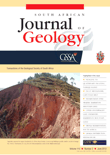
SOUTH AFRICAN JOURNAL OF GEOLOGY
Elevating geoscience through innovative research.The South African Journal of Geology (ISSN: 1012-0750, E-ISSN: 1996-8590) is a prestigious academic journal published by the Geological Society of South Africa, dedicated to advancing research and knowledge in the field of geology. Established in 1987, this journal has become a cornerstone for geoscientists, featuring a diverse range of studies that address key geological phenomena, particularly within the South African context. With its current quartile ranking of Q2 and an impressive Scopus rank placing it in the 70th percentile among Earth and Planetary Sciences, the journal is recognized for its significant contribution to the discipline. As researchers and professionals across the globe seek to explore and understand geological processes, the South African Journal of Geology stands out as an essential resource, fostering collaboration and innovation in geoscientific research.
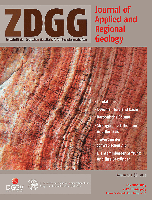
Zeitschrift der Deutschen Gesellschaft fur Geowissenschaften
Fostering Knowledge: Bridging Research and Education in GeosciencesZeitschrift der Deutschen Gesellschaft für Geowissenschaften is a prominent academic journal published by E Schweizerbart’sche Verlagsbuchhandlung, dedicated to advancing research in the field of Earth and Planetary Sciences. With its ISSN 1860-1804 and E-ISSN 1861-4094, this journal provides a platform for researchers to disseminate high-quality scientific articles and insights that contribute to our understanding of geological and environmental phenomena. Over the years, it has established itself as a reputable source within its category, holding a Q3 ranking among the Earth and Planetary Sciences (miscellaneous) journals in 2023, and achieving an impressive 85/195 rank in Scopus, placing it in the 56th percentile. The journal is published from Germany, specifically at Johannesstraße 3A, D 70176 Stuttgart, where it fosters a collaborative environment for scholars, professionals, and students alike. Although currently not an Open Access journal, it offers critical insights into various geoscience topics, making it an essential resource for those engaged in geological research and education. With its converged years stretching from 2008 to 2024, Zeitschrift der Deutschen Gesellschaft für Geowissenschaften is poised to continue its impactful role in the geosciences community.